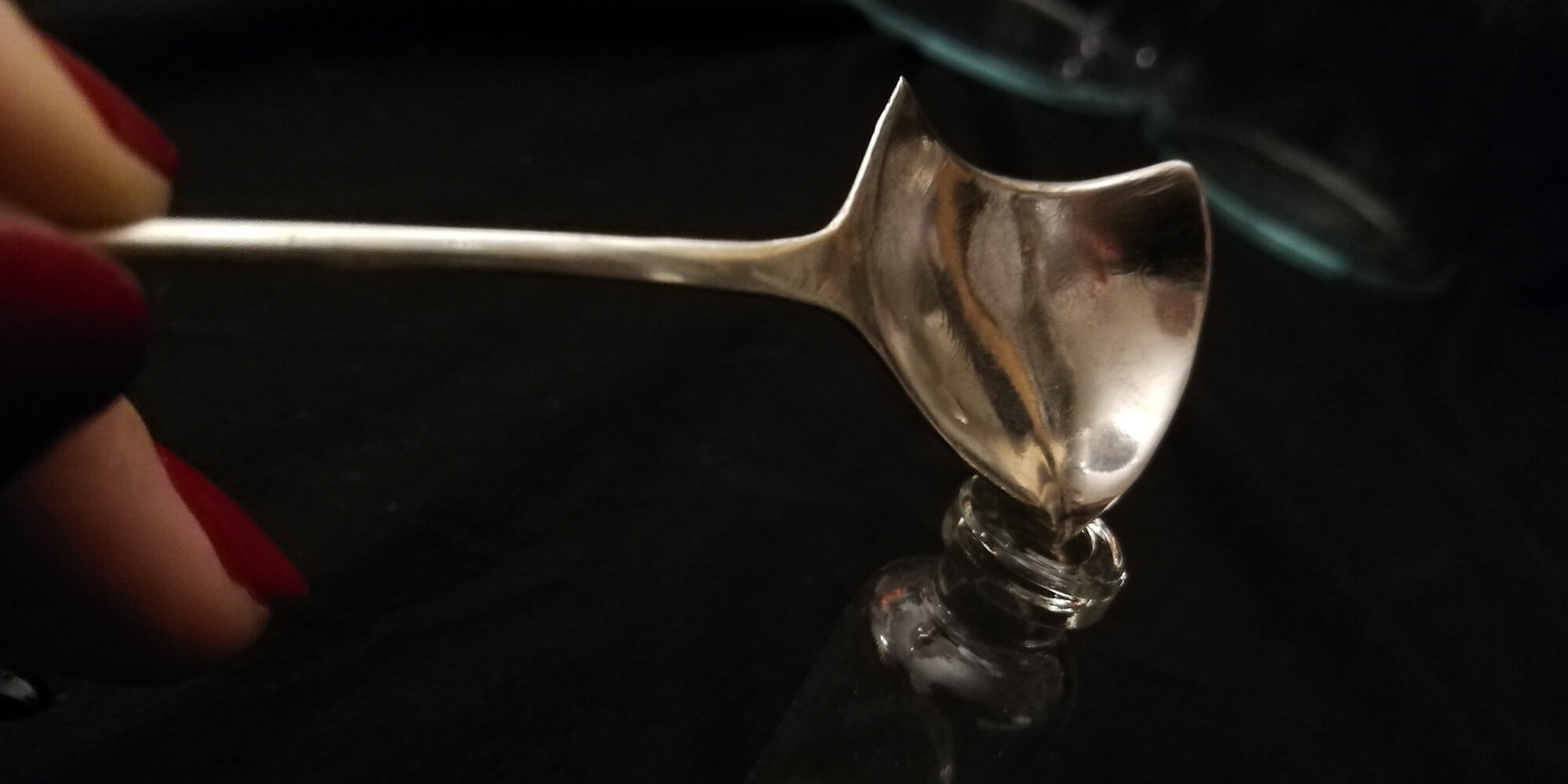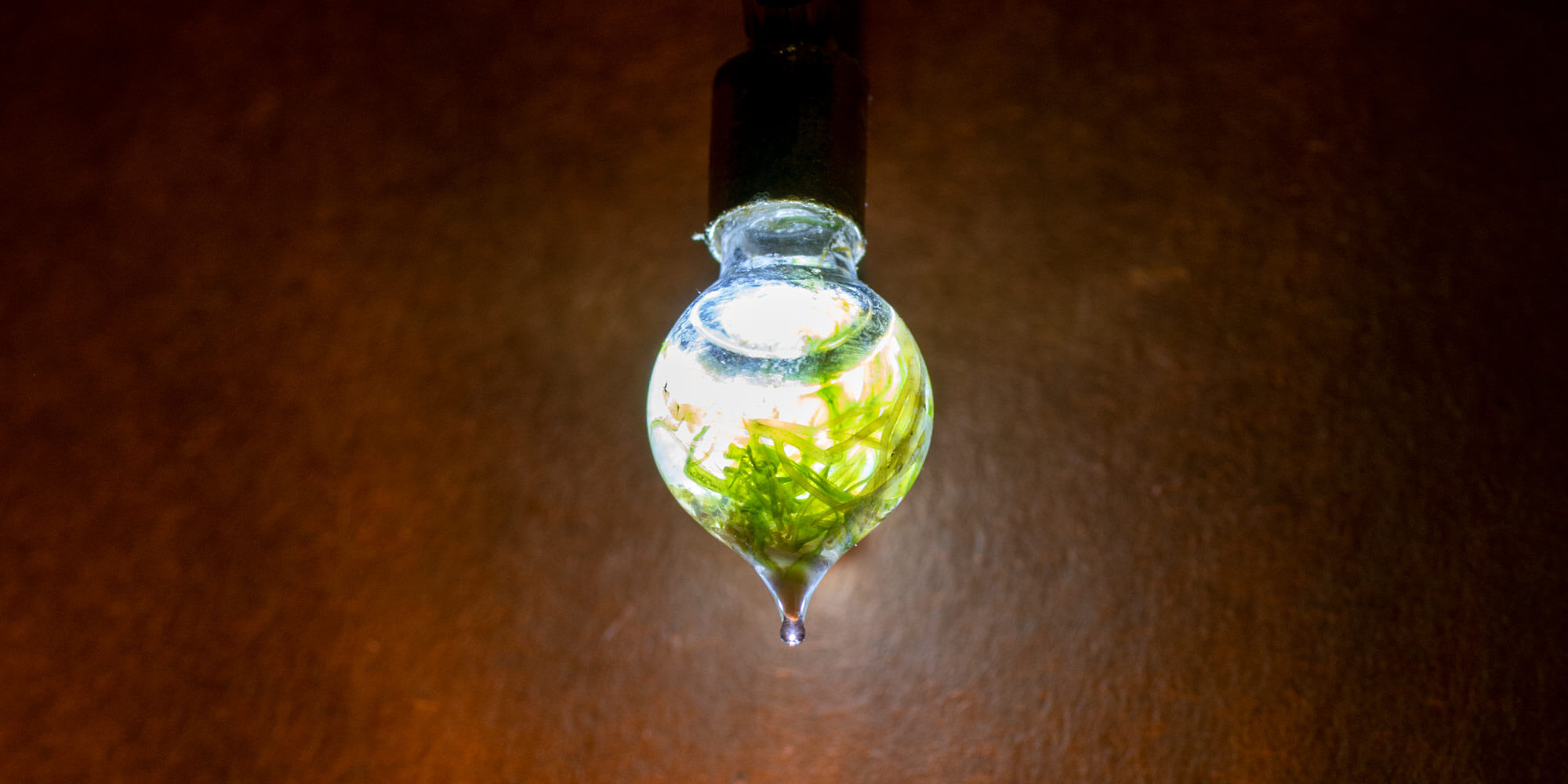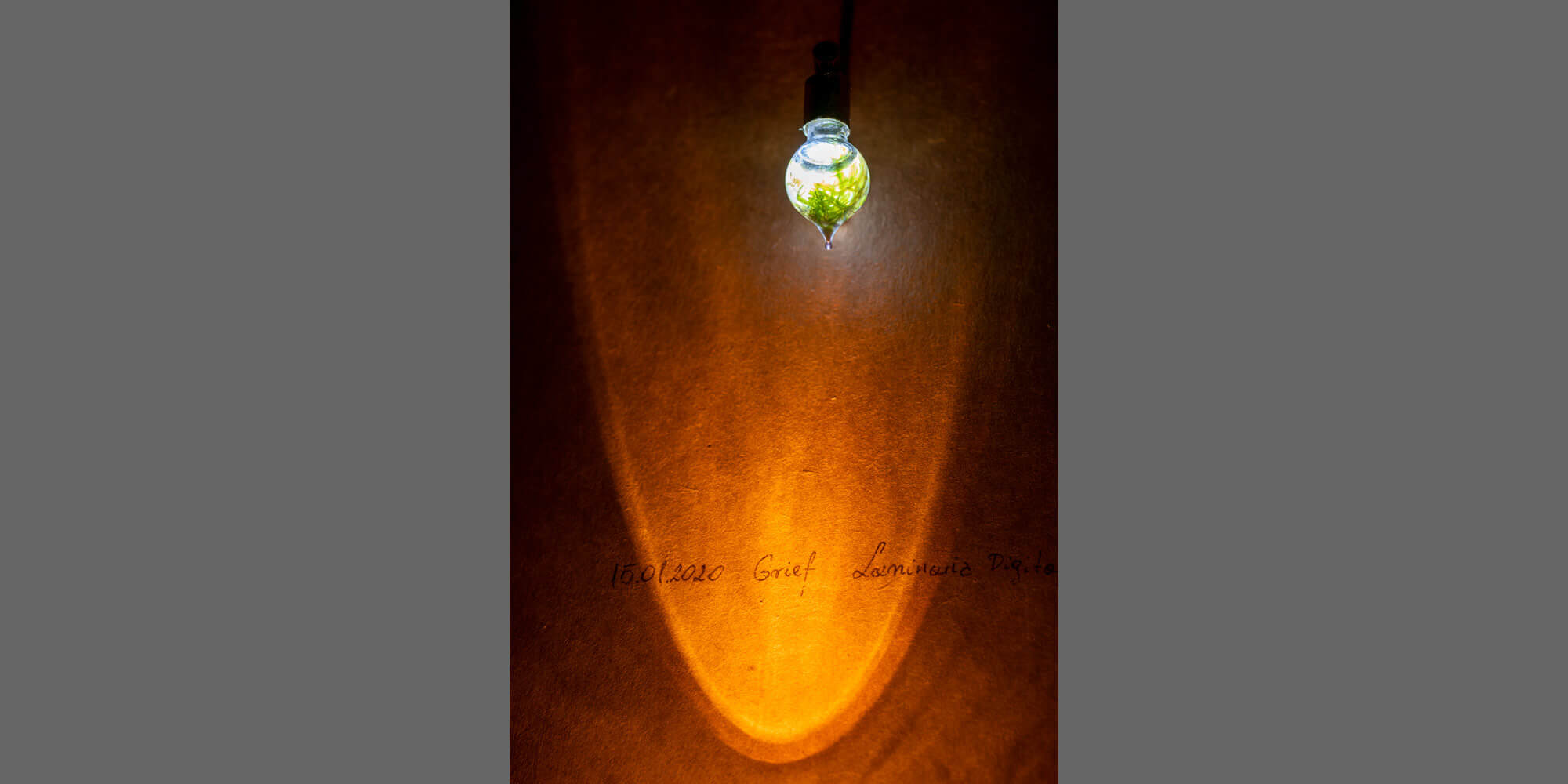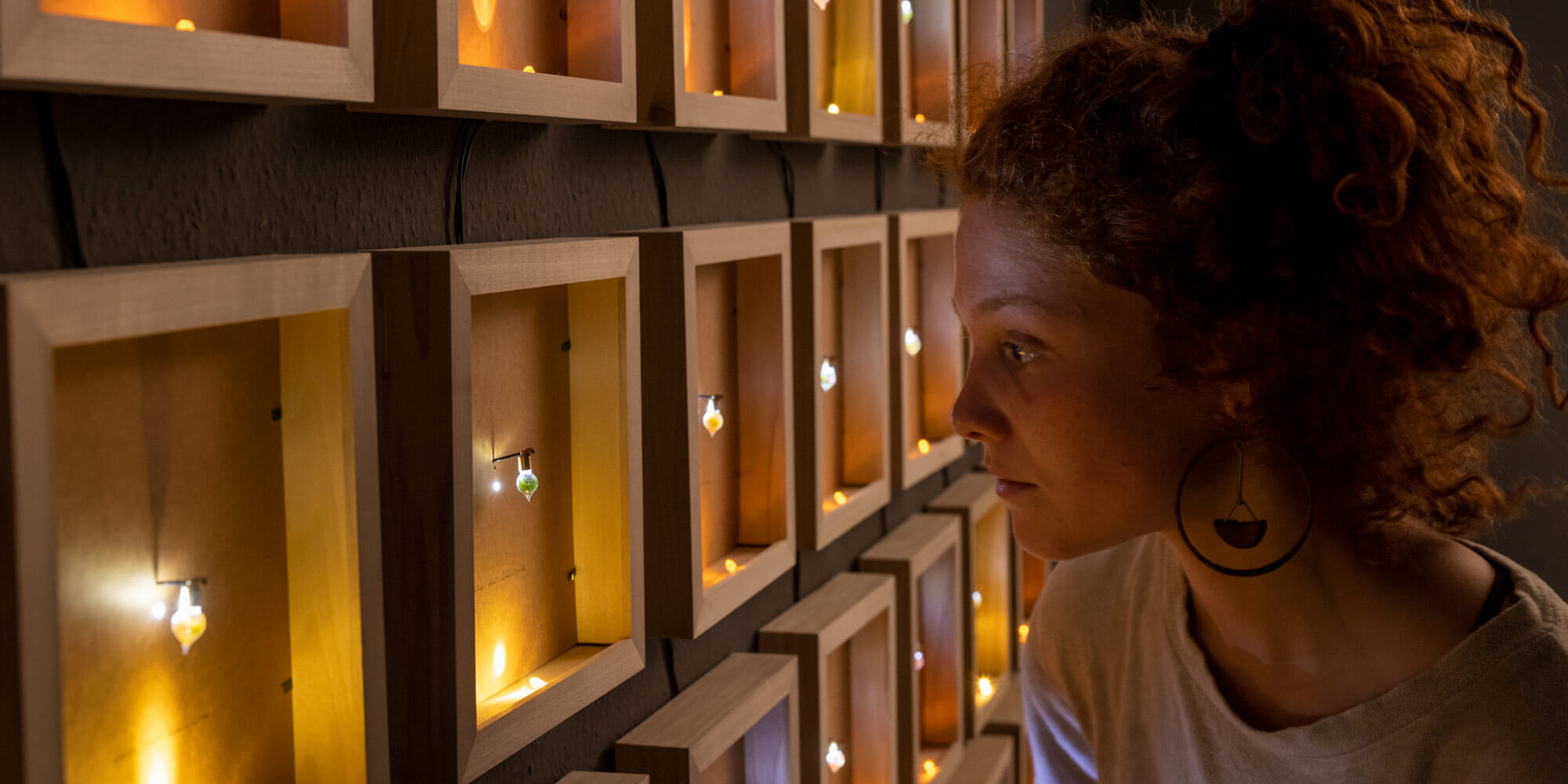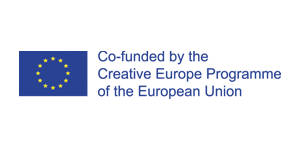After experiencing a devastating loss in autumn 2019, Kasia Molga struggled with grief. She cried a lot and eventually she started to collect her tears while wondering whether they could start and then sustain sea life. This work is a personal journey into understanding and embracing the act of mourning while creatively examining the interconnections between the human body, emotions and the body’s “side products” such as tears, with their chemical composition based on the reason for crying, as possible components of the mini marine ecosystem. In addition, during the pandemic the role of AI in curating news headlines had an enormous effect on the artist’s mental well-being.
Tears became a necessity to relieve anxiety. And so Moirologist Bot is another part of this work — an algorithm, trained on tens of thousands of environmental news headlines, which can “assess a need to cry” and, in an intimate setting, subject a viewer to one of nine videos made by the artist in the hope of inducing some tears. These tears then become part of the collection of mini oceans. How can we prepare our bodies to best “serve” an ecosystem and keep this drop of ocean healthy and happy? Can we embrace loss within our digital activities? Can we look at tears cried for the end of something as a positive and life affirming creation of a new mini ocean?
Credits
Concept, Artwork, Art Direction: KASIA MOLGA Music: ROBIN RIMBAUD Tech Support: ERIK OVERMEIRE Product Design: GOSIA SIWIEC Video: IVAN MAREVICH Additional Support: DAVOR DELIJA
This project is realized as part of EMAP/EMARE and co-funded by the Creative Europe programme of the European Union.

